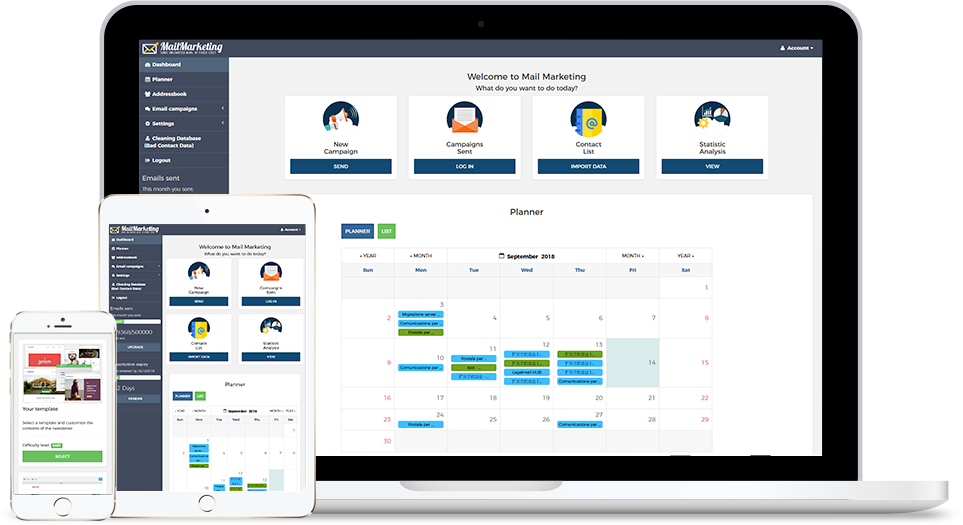The lead generation is one of the main phases of a marketing funnel.
Creating a well targeted mailing list is the first step to have a list of contacts of potential customers, people who might be interested in your product or service. This is a delicate phase, fundamental in any business, which requires a series of tools and actions at the basis of which there must be a defined and clear strategy, focused on objectives.
Having said that, there is no lead generation without lead magnet. But what is lead magnet, and why is it so important?
Let see it in detail.
What is meant by lead magnet
With lead magnet we mean a content that acts as an incentive to leave your data - in our case the email - to be contacted. It is a content that, just like a magnet, attracts the prospect and convinces him to voluntarily communicate his email in exchange for a "gift", that is a useful, informative or "problem-solving" content.
It could be considered as a sort of do ut des, but in a positive sense: you leave me your data in exchange for a content that helps you to solve a problem, to know better a topic, to study a case study similar to yours.
Lead magnets are the best way to create a highly profiled mailing list of people who can become your customers because they are potentially interested in what you do or sell. Important, the lead magnet must be free and closely related to what you offer, as well as being placed in the right place in the sales funnel.
Having a profiled mailing list is the only way to apply your email marketing strategy correctly and effectively.
Lead magnet: what content?
The lead magnet can take various forms: ebooks, guides, case studies, white papers, webinars, videos, free lessons, discounts, trial versions of software, pdf ... the only condition is that it has to be useful for the customer.
The lead magnet in fact should not be just any content, but something tailored to the prospect we want to attract. If we offer Seo services, for example, and our typical buyer is the small entrepreneur who would like to approach the subject, it may be helpful a short video explaining what Seo is or a small pdf with a guide to key concepts. On the contrary, such a lead magnet will be completely useless for a professional who is looking for advanced guidance and wants to progress in the subject.
In short, to every target its lead magnet!
Before creating the lead magnet: target and competition analysis
There is no working lead magnet without an accurate upstream strategy, a strategy that must also include a careful analysis of the target and competitors.
As already mentioned, knowing well your buyer personas is crucial: what are the needs, fears and desires of our potential customers? How could our product/service satisfy their needs? And how can our lead magnet attract them to us?
Studying communities, the reference market, keywords and doing a deep analysis of social networks can help us to understand more.
Equally important is the study of competitors, direct and indirect: what do they do? What lead magnet do they offer? And how can ours be more attractive?
Understanding the strengths and weaknesses of competitors' strategies helps us to make the best strategic and operational choices.
The "perfect" lead magnet: what it should be like
While "perfect" is a hyperbole (you are never sure of anything in marketing - and that's why it is important to test and verify data), the perfect lead magnet must give specific information and help to solve a concrete problem, or rather, just one concrete problem: this will generate in people a sense of authority and will lead them to trust us, because they will recognize us as experts.
Equally important is to use the tone of voice and language of our target audience.
Lead magnet: pop-up and landing page
The lead magnet can be placed in a pop-up, which can be opened on a specific page of the site or blog, or at the end of a landing page, which will allow us, through the art of copy and UX design, to convince our user to perform the action we want.
For what concerns copywriting, particular attention must be paid in the call to action: a trivial CTA can dissuade the user to perform the action, but sometimes a simple and direct verb can be more effective than an original CTA in a forced way.
In short, as usual you have to test, verify and correct.
I have the lead: and now?
The lead magnet is a very useful tool to increase a mailing list. Once you get the contacts, you have to move on to the next phase of the funnel: usually it is the lead nurturing, that is the phase in which, through a mail marketing campaign, you create a relationship of trust and empathy with the person who left us the contact, with the intention of turning him into a customer.
Good content, scanned over time, useful, not finalized to the sale (for that there will be time ...) are the basis of the lead nurturing. Only at a later stage, the mail marketing strategy can move on to sales and the creation of a lasting relationship with what, if everything went smoothly, will have become a customer.


